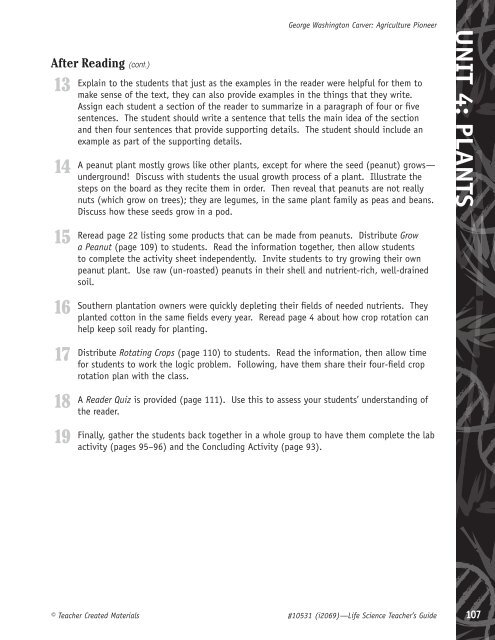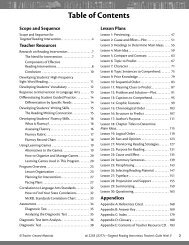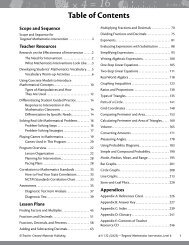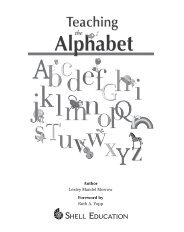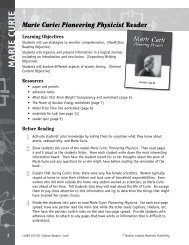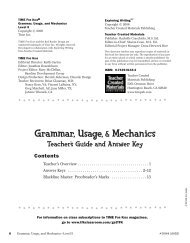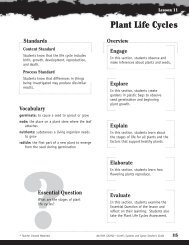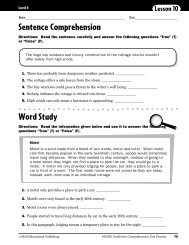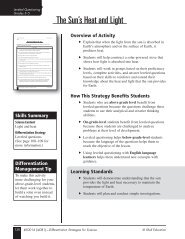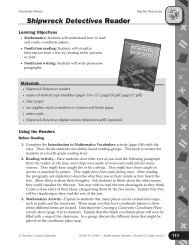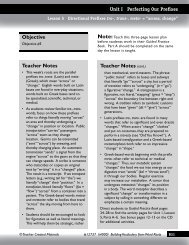George Washington Carver - Teacher Created Materials
George Washington Carver - Teacher Created Materials
George Washington Carver - Teacher Created Materials
You also want an ePaper? Increase the reach of your titles
YUMPU automatically turns print PDFs into web optimized ePapers that Google loves.
After Reading (cont.)<br />
13<br />
14<br />
15<br />
16<br />
17<br />
18<br />
19<br />
<strong>George</strong> <strong>Washington</strong> <strong>Carver</strong>: Agriculture Pioneer<br />
Explain to the students that just as the examples in the reader were helpful for them to<br />
make sense of the text, they can also provide examples in the things that they write.<br />
Assign each student a section of the reader to summarize in a paragraph of four or five<br />
sentences. The student should write a sentence that tells the main idea of the section<br />
and then four sentences that provide supporting details. The student should include an<br />
example as part of the supporting details.<br />
A peanut plant mostly grows like other plants, except for where the seed (peanut) grows—<br />
underground! Discuss with students the usual growth process of a plant. Illustrate the<br />
steps on the board as they recite them in order. Then reveal that peanuts are not really<br />
nuts (which grow on trees); they are legumes, in the same plant family as peas and beans.<br />
Discuss how these seeds grow in a pod.<br />
Reread page 22 listing some products that can be made from peanuts. Distribute Grow<br />
a Peanut (page 109) to students. Read the information together, then allow students<br />
to complete the activity sheet independently. Invite students to try growing their own<br />
peanut plant. Use raw (un-roasted) peanuts in their shell and nutrient-rich, well-drained<br />
soil.<br />
Southern plantation owners were quickly depleting their fields of needed nutrients. They<br />
planted cotton in the same fields every year. Reread page 4 about how crop rotation can<br />
help keep soil ready for planting.<br />
Distribute Rotating Crops (page 110) to students. Read the information, then allow time<br />
for students to work the logic problem. Following, have them share their four-field crop<br />
rotation plan with the class.<br />
A Reader Quiz is provided (page 111). Use this to assess your students’ understanding of<br />
the reader.<br />
Finally, gather the students back together in a whole group to have them complete the lab<br />
activity (pages 95–96) and the Concluding Activity (page 93).<br />
Unit 4: Plants<br />
© <strong>Teacher</strong> <strong>Created</strong> <strong>Materials</strong> #10531 (i2069)—Life Science <strong>Teacher</strong>’s Guide 107


